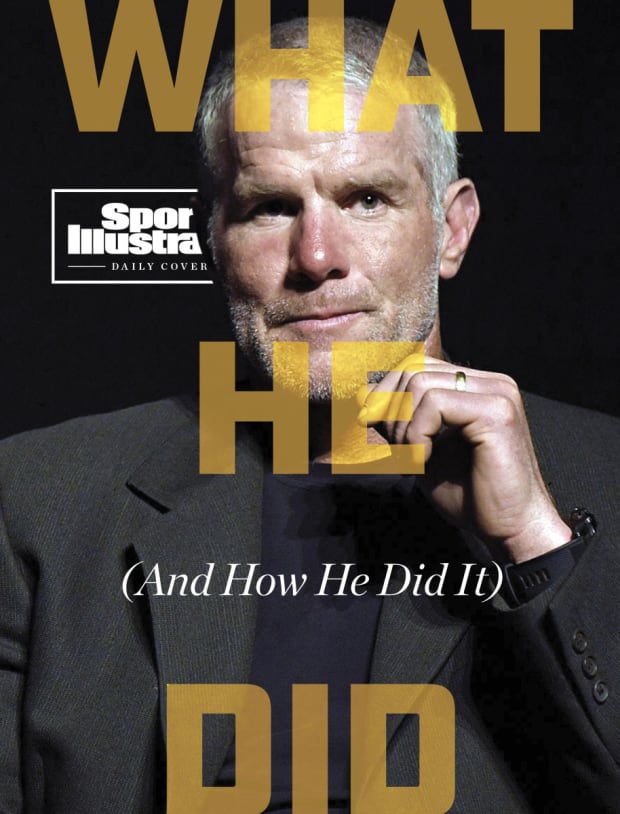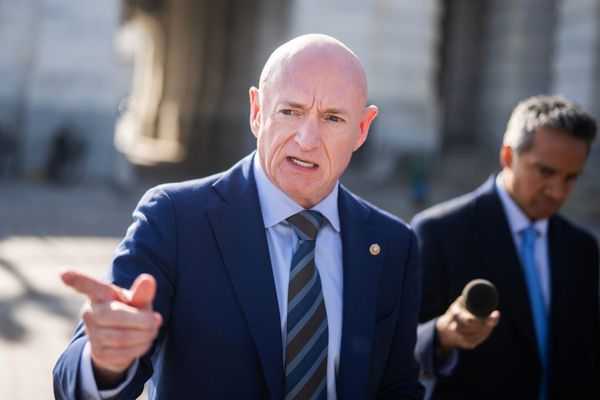Good morning, I’m Dan Gartland. I think the only person who had as good a night as Jimmy Butler was Kevin Harlan on the call.
In today’s SI:AM:
⚾ Daniel Bard’s struggles with the yips
💣 The ACC’s precarious position
If you're reading this on SI.com, you can sign up to get this free newsletter in your inbox each weekday at SI.com/newsletters.
The Heat will go as far as Jimmy Butler can carry them
Game 1 of the Eastern Conference finals followed a script similar to most Heat playoff games since 2020: Jimmy Butler took control, especially in the game’s most crucial moments, and Miami earned a hard-fought win.
Butler finished with 35 points, seven assists, five rebounds and six steals as the Heat beat the Celtics, 123–116.
Just as the Sixers lost Game 7 in Boston with a terrible third quarter, Miami won Game 1 with an explosive third quarter. The Heat outscored the Celtics 46–25 in the third, thanks in large part to Butler, of course. He scored 12 points in the quarter and assisted on another three Miami baskets.
It’s difficult to overstate how monumental Butler has been for the Heat during these playoffs. With Tyler Herro out injured, Butler has had to assume more of the offensive load. The Heat are now 9–2 with him in the lineup this postseason, and those losses came in two of Butler’s least prolific scoring games (25 points in Game 2 against the Bucks and 19 points in Game 5 against the Knicks). Other players have stepped up to fill the hole left by Herro’s absence—like Caleb Martin, Gabe Vincent and Max Strus—but the Heat go as Butler goes, and right now he shows no signs of slowing down.
While the Heat’s star player carried them to victory, Jayson Tatum could have done more for the Celtics. There were a few possessions late in the fourth quarter where Tatum never touched the ball. He did get the ball in his hands immediately after a Celtics timeout around the three-minute mark but turned the ball over with a bad pass that was intercepted by Butler. Twice in the final two minutes, Tatum was called for traveling, ending crucial possessions. Tatum played a good game overall (30 points on 9-of-17 shooting), but the Celtics could have gotten a little more out of him.
The baffling aspect of the game for the Celtics was the number of three-pointers they took—or didn’t take. Boston was second in the NBA this season with 42.6 three-point attempts per game, behind only the Warriors. And yet, in last night’s loss they attempted only 29 shots from behind the arc. That wasn’t a problem in the first half, when Boston outscored Miami 40–16 in the paint. But in the second half, the Heat won the battle inside 24–22. Tatum, who attempted more total three-pointers than anyone in the NBA this season aside from Klay Thompson, didn’t take a single three in the second half. Al Horford was second in the league with a 44.6% three-point percentage this season but went 1-for-5 last night, including 0-for-3 in the second half.
Some of the Celtics’ issues might be blamed on rookie coach Joe Mazzulla. Why didn’t he call plays that led to more three-point looks? Why didn’t he instruct the players to get Tatum more involved in the fourth? Most crucially, why didn’t he call a single timeout during the Heat’s incendiary third quarter?
“We were prepared, and then we let go of the rope,” Mazzulla told reporters after the game. “There’s two story lines here. One, we were ready to play and we [did] a great job of executing on both ends of the floor in the first half, and it’s about the consistency. … We have to be prepared for when we do outplay them that they’re going to respond and we have to respond. So we were prepared. We just let go of the rope.”
Butler has been so impressive for the Heat this postseason that it’s easy to overlook how great of a job Erik Spoelstra has done coaching the team. The Miami roster is full of undrafted players like Martin, Vincent, Strus, Duncan Robinson, Haywood Highsmith, Omer Yurtseven and veteran Udonis Haslem, and Spoelstra is getting the most out of them. Can they keep it going long enough to pick up three more wins against the Celtics?
The best of Sports Illustrated

Shelley Mays/USA TODAY NETWORKS
- Today’s Daily Cover story focuses on Brett Favre’s role in a scheme that misused welfare money in Mississippi. Despite Favre portraying himself as an “unknowing and tangential participant,” Michael Rosenberg’s examination finds otherwise.
- Stephanie Apstein profiled Rockies reliever Daniel Bard, whose return to the mound after another case of the “yips” came following an IL stint for anxiety.
- With half of the conference’s members willing to jump ship, the entire ACC is liable to fall apart, Pat Forde writes.
- What happened inside the NBA’s draft lottery room when the Spurs landed the top pick? Chris Mannix was there.
- These eight players impressed Kevin Sweeney the most on the first day of the NBA combine.
- A nearly two-hour frost delay postponed the start of the PGA Championship this morning. Alex Miceli and Keith Stewart preview the story lines and betting angles for the year’s second men’s major, which is now underway.
- Manchester City dominated the second leg of the Champions League semifinal against Real Madrid, cementing a chance to win the title the club (and its owners) have invested in so heavily, Jonathan Wilson writes.
The top five...
… things I saw last night (and this morning):
5. Irishman Shane Lowry breaking out his hurley during the frost delay at the PGA Championship.
4. Kevin Love’s full-court outlet pass.
3. Harrison Bader’s diving catch on a line drive to center.
2. Pete Alonso’s towering walk-off homer. Since September 2020, the Mets have had four walk-off homers. All have been hit by Alonso. He then dropped a very casual f-bomb in his postgame interview.
1. Kevin Harlan’s “Jimmy freaking Butler” call on a clutch three in the fourth quarter.
SIQ
On this day in 1950, which Cardinals infielder, whose name sounds oddly similar to a Hall of Fame pitcher’s, committed errors on three straight plays, allowing the Dodgers to complete a miraculous comeback?
- Tommy Glaviano
- Greg Mathis
- John Schmaltz
- Rory Holliday
Yesterday’s SIQ: The first baseball game broadcast on TV (on this day in 1939) was actually not an MLB game. Which two teams were featured in that historic game?
- Columbia and Princeton universities
- Boys’ Latin and William Penn high schools in the Philadelphia city championship game
- Giants old-timers vs. Dodgers old-timers
- Toronto Maple Leafs and Montreal Royals of the minor International League
Answer: Columbia and Princeton. In addition to being the first baseball game shown on television, it was the first televised sporting event of any kind. The game drew an estimated 5,000 people to Columbia’s Baker Field in New York City, but only about 400 people were able to watch the game on TV. That’s how many television sets were within NBC’s broadcast range at the time.
The game was a good one. Princeton won, 2–1, in 10 innings. The broadcast wasn’t so great. NBC used a single camera, perched on a platform perpendicular to home plate, which made it nearly impossible for viewers to follow the game.
“It is difficult to see how this sort of thing can catch the public fancy,” read a New York Times review published the next day.
The Times complained that the single camera was “woefully lacking” and that an effective broadcast really needed three or four cameras. The review also panned the picture quality as being blurry and dark.
The broadcast cost NBC $3,000 (about $66,000 today) and was successful enough that the network decided to try airing a big league game a few months later. On Aug. 26, 1939, NBC used two cameras to bring audiences a Dodgers-Reds game from Brooklyn.







